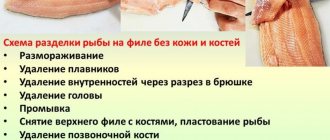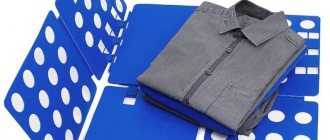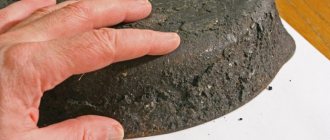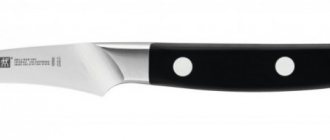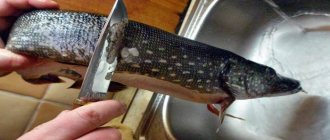Hi all. I am sure that if you are reading these lines, it means that you or your guests love herring. My friend always said. If there is no herring on the table, then without it the holiday is not a holiday.
I really love herring under a fur coat, so I cook it every holiday, I always take salted fish and clean it myself. You can take it already prepared in the store. I mean peeled and milled. But I prefer to do it myself.
I also love putting pieces of fish with onions and herbs on a beautiful plate and serving them on the holiday table.
My aunt many years ago showed me how to properly clean and fillet a herring. Today I want to share these subtleties with you. By following step by step, you will have clean and beautiful pieces in no time.
Classic method
- First of all, cut off the head, fins and make a longitudinal cut on the belly / Photo: obaldela.ru
- Take the herring, make a cut near the head with a sharp knife and cut the ridge. Next, pull the fish head towards you to separate it from the carcass and grab the insides. Open the belly, remove the black film from the walls with a knife and the insides, if any remain. Trim the fins and tail.
- Next, cut along the ridge, lift the skin and remove it from the meat. Feel the ridge through the abdomen and first separate one half, and then the other. Now inspect the parts of the carcass to see if there are any small bones left in them. They can be removed by hand or taken out with special tweezers.
If you are preparing “Shuba”, we recommend cutting the herring this way.
General tips for preparing herring
Herring is a valuable commercial ocean fish. It can be bought fresh frozen, pickled and salted. Herring fully retains its taste and quality characteristics if it is salted immediately after catching.
How to choose a herring
To choose fresh and tasty herring, pay attention to the following characteristic features:
- gills are dark red in color with an elastic structure without a sharp, bitter odor;
- a thick back, which indicates the maturity of the fish;
- eyes with a clearly defined lens. In lightly salted fish they are reddish, in fish with caviar they are slightly cloudy;
- the skin is clean, shiny, without damage or white film on the surface;
- scales are small. She confirms that the fish is young;
- The abdomen is dense, without dents or yellowness.
A herring with a rounded mouth is feminine, so there may be caviar inside. The most delicious and tender herring is considered to be one that has not yet spawned. It can be found in late May or early June. Male herring have an elongated head. There are no caviar in the abdomen, but there is milt (sperm in fish) and enough fat under the skin.
In addition to visually inspecting the herring, press its side with your finger. If a dent remains, it is better not to buy the product. Peeling skin and white coating indicate that the fish was overexposed to salt or stored at high temperatures.
How to choose a herring: Pixabay
Features of cutting herring
After purchasing, use the herring immediately. It is not recommended to store it for more than 2 days without brine, because the skin dries out, the salt concentration increases, and the fish loses its taste.
To ensure that the herring retains its shape and taste after cleaning, use the following recommendations:
- Before cleaning, rinse the fish under running cold water to remove excess salt and plaque.
- Use plastic boards to clean herring; the wooden surface immediately absorbs the unpleasant odor.
- Start cleaning salted fish by cutting the belly and removing the head. Otherwise, cutting the cleaned fish into beautiful, neat pieces will not work. If you plan to place the herring with its head on the dish, remove the gills.
- Gut the insides under running cold water to avoid staining clothes and kitchen utensils.
- Remove the skin by grabbing it near the head. For fresh fish, it can be removed without tearing or losing flesh, like a stocking.
- Store herring at room temperature for no more than 3 hours. Contact with oxygen increases the strong fishy smell and spoils the quality of the fish.
- Soak the herring after cleaning (abilizing) if it is too salty. Culinary expert William Pokhlebkin in his “Great Encyclopedia of Culinary Art” does not recommend soaking in water, since this causes the herring to lose not only salt, but also fat. At the same time, its meat becomes coarser. Soak the herring in milk, kefir, yogurt, whey or in a mixture of these dairy products with boiled water or drinking tea.
What are the features of cutting herring: Pixabay
The two-minute method
- Firmly grasp the ridge and gradually move towards the tail
- Take the fish, cut off the head. Make a longitudinal cut on the abdomen and remove the entrails. Rinse the herring and then start cutting. Take the ridge from the belly side with your thumb and forefinger and move along it, remove the skeleton, trim the tail and remove the remaining bones. Next, use your finger to separate the fillet from the skin.
Dinner is served!
How to quickly clean herring from bones in one motion video:
Removing the bones
To extract bones, each housewife has her own secrets. Let's look at a few of the most popular ones.
To clean herring from bones step by step, follow these steps in the first way:
- Place the prepared fish on the board.
- In the lower part of the abdomen from the neck to the tail, cut strips of meat approximately half a centimeter wide; they contain small bones that cannot be removed.
- Make a cut along the ridge to the depth of the ribs so as not to damage them.
- Make cuts along the tail.
- With your hands, grab the top of the half and pull in the direction of the growth of the abdomen.
- Turn over and do the same with the other half.
- Don't forget to remove the skin from each half. To do this, cut it at the neck, grab the edge with your hand and pull it towards the tail.
The second method is called extrusion. Using it you need to perform the following algorithm:
- Make a cut at the bottom of the tail.
- Open the fish along the belly like a book and place the inside on a cutting board.
- Use your hand to press it along the spine, pushing the vertebrae out of the meat.
- Grasp the ridge separated from the meat and pull it from the neck to the tail.
- Don't forget to get rid of the skin. To do this, make cuts where the ridge passed and remove the fillet with your hand.
A big mistake housewives make is using meat with the skin. This is how rolls with Korean carrots, seaweed or other fillings are prepared from incompletely cut produce.
They certainly turn out tasty, but they are not served in the most convenient way.
Since guests, instead of eating the snack, need to disassemble it and get rid of the skin themselves.
If you cook them from pure meat, it will be more tasty and convenient to serve as a snack.
Proper cutting: how to remove large and small bones in salted herring
The herring is bony. In addition to the backbone and ribs, it is literally stuffed with many small bones. But they are easily removed from tender meat. This can be done in several ways.
You might be interested:
Salted herring pate
Minced herring,
How to deliciously pickle onions for herring.
Traditional way
- Cut off the tail.
- Use your thumb to spread the meat on the back and run it along the spine to the rib bones. The meat will separate easily.
- Run your finger along the ridge, separating the meat
- Holding it from the inside with four fingers, continue pressing to separate the fillet from the bones, moving along the ribs from the head cut to the tail. Try not to tear the ribs away from the spine.
- Use your fingers to press the meat away from the ribs.
- After separating one fillet, do the same on the other side.
Remove the backbone and ribs, separating the fillet
How to properly fillet a herring from bones with step-by-step photos
This is the easiest way to cut a herring into two fillets. This fish is suitable for preparing salads and cutting into pieces for the table. You can see this in the photo.
What you will need:
- Lightly salted herring
- Cutting board
- Paper towels
- Knife (I have a special one for fish)
Look, friends, it is important to choose fatty large fish. And very healthy lightly salted. I have fish 400-450 grams each. It would be nice if it were freshly salted. Now there are a lot of low-quality goods. Choose good quality products.
Many people wash the carcass with running water and dry it with napkins. Also, cut off the head.
It is recommended to use either a plastic or glass cutting board for fish. I have a wooden one, special for cutting herring.
We cut off the tail, you can cut off more, you can cut off less, as you like. Or how much you don't mind. I'm not in a restaurant, I don't have standards or norms. I cut herring at home.
Friends, many housewives cover the board with cling film or cover it with a small bag. I use paper kitchen towels. I feel so comfortable. Many people cut on newspapers; I prefer disposable paper towels.
As the chefs say, since we started talking about the restaurant, I remembered. We rip the abdomen from the top. Some people find it comfortable from the tail up to the head.
We remove the insides. I have milk in one and caviar in the other. Let's take it all out. Milk and caviar are also tasty, and many people like them; I don’t throw them away.
Everything inside needs to be cleaned, this black film is bitter, it needs to be cleaned out with a knife. You can rinse the inside with cold water and dry with napkins.
I want to say right away that I cook for my family, so I work without gloves. I just don't feel comfortable wearing them. You can wear disposable gloves and do chopping in them.
We make a cut along the back along the ridge, and cut out the fin at the top.
Separate the fillet from the central bone by holding the bone with one hand and separating it with the other. We do everything carefully. If the herring is frozen, then everything will fall apart.
The bones are well behind, you can see it. The herring fillet separates from the bones well. That is, one fillet was practically separated.
We cut off the fin at the tail part, just cut it off with a knife.
And remove the central bone. To do this, hold the fillet with your hands or fingers, and with the other hand, holding the ridge, carefully remove it along with the bones. You need to hold the fillet, otherwise pieces of fish will remain on the bones.
Then we remove the fillet, you can pry it from the top or from the tail. As convenient for you, also very carefully so as not to remove the film along with the pieces of fish.
The bones are small, you can remove them with tweezers or by prying them with your fingers. Inspect the fillets; if there are any, remove them. This is the fastest way if anyone doesn’t know how to peel herring for herring salad under a fur coat.
Then I cut it into centimeter-long longitudinal strips and take out the small bones. I chop it into small cubes. And can be used to make salad.
You can also cut into pieces and serve. The pieces can be thin or larger. To make everything beautiful, I put one on top of the other and cut it with a sharp knife, holding the fish with my hands.
You can then wash your hands with lemon or apple cider vinegar, for example. There are special products or soap that remove odors.
We spread it and serve it to the table, in any plate, or in a special one for fish.
You can clean Iwashi and Norwegian in the same way. In the photo I have a Norwegian fish. I cut it into cubes, inspect it additionally, and remove small bones.
I use it to fill tartlets; lovers of traditional salads or lovers of appetizers with beets like it.
Or you can make a fur coat, as we call it in our family. You can cook either using a split ring or in a salad bowl.
There are quite a lot of options for where to apply it. I also cut the fillet into thin strips, pickle onions in half rings, add Korean carrots, and season the appetizer. And in our family we have a snack called chanterelle.
Unconventional way
- Wrap the fish without head and entrails in a paper towel.
- Lightly tap the package on the table.
- Remove the towel and place the fish belly down on the board.
- Press down on the back and press it firmly against the board.
- Place the herring belly down and press
- Turn the herring over and remove the backbone along with the bones, starting from the head cut.
Basic cutting rules
Regardless of which method of cleaning herring from bones the housewife prefers , she must adhere to the basic requirements for cutting this fish. Following them will help make the cleaning process quick and simple:
- When cleaning fish, you need to use a very sharp knife. This will eliminate cuts and help avoid losing fish.
- To clean herring you need to have a separate board. This is due to the fact that the fishy smell is absorbed very quickly. That is why it is better to refuse wooden boards. Some housewives use only plastic and glass boards to clean fish. The smell is practically not absorbed into them.
- Using paper or cling film allows you to keep the board in its original form for several years. Newspapers cannot be used as they contain a lot of paint.
- To get rid of unpleasant hand odor after work, you can use lemon juice or diluted apple cider vinegar. Any glass washing liquid will also help get rid of the fish smell.
- While cleaning, you should regularly dry your hands on a paper towel. And you should also wipe the knife blade.
- Tweezers allow you to remove small bones in a few seconds.
Punching method
This method does not completely remove the bones from the fillet, but it is also quite simple.
- Gut the fish, cut off the fins and remove the skin. Rinse thoroughly under running water. Then make an incision on the back of the carcass. Take it in your hands so that the fingers of your palm are inside the abdomen, and the thumb lies in the dorsal incision.
- Squeeze your fingers and separate part of the fillet from the backbone using a pressing motion. Continue doing this until half of the fillet is completely separated. If you carry out the process carefully and carefully, most of the bones will remain on the ridge.
- Do the same with the other half, but now hold the ridge with one hand, and make pressing movements with the other.
This method works well on fresh, well-thawed herring.
Another simple way
- Place your thumb at the location of the dorsal fin, 2–3 cm deep. Carefully move it towards the tail, dividing the carcass of fresh or lightly salted herring in half.
- Take the free part of the fillet on the tail and pull it towards the head. When you have separated one half, proceed to the second. Place your finger under the spine and remove the tail portion of the fillet. Pull the spine, lifting it away from the fish. Now all you have to do is remove the bones from the fillet.
Which herring to choose?
The fresher and larger the fish, the easier it is to separate the bones and skin. When choosing, pay attention: if the gills are reddish and elastic, and the eyes are not cloudy, this is an indicator of its freshness.
The video on our website will help you quickly learn how to peel herring. Cutting may seem difficult only at first. Once you “get a taste” and try cleaning fish several times, you will get the hang of it and stop buying canned herring with vinegar in oil for preparing “shuba” and other dishes.
You can take Pacific, Atlantic or Black Sea herring; its full replacement is mackerel, trout or salmon; dishes with these types of fish will also turn out very tasty.
How to peel herring quickly in one motion
For those who are already good at handling fish, there is a quick and effective way to cut it. This method is used where rich catches are not uncommon and it is necessary to speed up the processing process. The fish is taken by the tip of the tail with both hands. One hand on the half from the abdomen, the other from the back. You need to hold it very tightly so that the carcass does not slip out of your fingers. Now spin the fish in the direction “away from you”, and when it finishes its rotation, spread your arms to the sides with a sharp jerk. In one hand there should be a ridge with a back, and in the second - two halves of the abdomen, already cleared of bones. Now the back fillet is separated and the tail is cut off.
Slicing herring for the festive table
Perhaps there will not be such a feast in our country, no matter where there is a place for herring. Smoked, salted, sliced as a separate dish with dill or onions - this fish is always an invited guest.
But don’t forget that a lot also depends on the serving and presentation of dishes.
And it’s important to make your guests’ mouths water just by looking at the plates.
There are many options. And in this case, the herring can be called self-sufficient, since it will look great even in the form of ordinary slices. But if you want variety, you can add other products; this will not spoil the composition. Fish goes perfectly with onions, with mini-snacks, toast, herbs and pickling.
You can arrange the slices alternately or overlapping, you can create its original appearance on the dish. If the feast is dedicated to a specific holiday, then you can lay out, for example, March 8 or a Christmas tree, adding olives, lemon or red caviar to the herring. Believe me, this option will look like a win-win.
Give free rein to your imagination, and your culinary work of art will turn out to be one and only.
But if you don’t have the time or mood for this, don’t worry, most people love herring so much that it will never let you down as a treat.
How to remove bones from herring? Cutting salted herring for preparing salad and serving.
What if the bones come off very poorly?
There are cases when the fillet is very difficult to move away from the bones, tears and loses its presentation. In such a situation, a plastic bag will come in handy. The cutting is carried out in the following sequence:
- Make a longitudinal cut along the belly of the herring.
- Gut all the insides and remove the dark films.
- Place the carcass in a bag and beat it with the back of a kitchen knife (do not beat it too hard so as not to deform the meat).
- Remove the herring from the bag, cut off the head and tail, remove the fins, and separate the backbone and bones from the fillet.
- Remove the skin at the very end to preserve the neat shape of the product.
How to quickly peel a herring from the bones with one movement of the tail:
Preparing to clean herring
To quickly separate the bones from the fillet and cook it in a few minutes, you first need to prepare the work surface and tools.
To clean the herring, it is better to select a separate board, but you can wrap it in cling film so that there is no smell and fillet residues ingrained into the wood or plastic. Instead of film, you can use a thick plastic bag.
You can wear latex medical gloves or rub your hands with lemon juice after washing to get rid of the fishy odor.
For cleaning you will need:
- sharpened knife;
- gloves (for example, medical);
- tweezers. It should be at hand. With its help, you can remove small and thin bones from the fillet, which are located near the ridge;
- paper towels or napkins. They are needed to remove intestinal films and blood;
- trash bag.
Preparatory process
Even the most passionate fans of herring are not enthusiastic about cleaning it. After completing this process, you need to wash your kitchen utensils, cutting board and hands so that no fishy smell remains on them. In order for everything to go smoothly with minimal losses, you need to prepare:
- A cutting board specifically designed for fish. It is optimal to use plastic or glass products, since they are easier to clean and remove odors.
- Sharp knife. The quality of cleaning herring directly depends on the sharpness of this device. If the tool needs sharpening, it is better to do it right before cutting the fish.
- Tweezers. It will help you easily remove small bones hidden in the fillet.
- Waste bags. If you immediately put the offal and bones in them, you will need less time for subsequent cleaning.
- Dishes for peeled herring. This can be either a special oblong dish in the shape of a fish or an ordinary plate.
